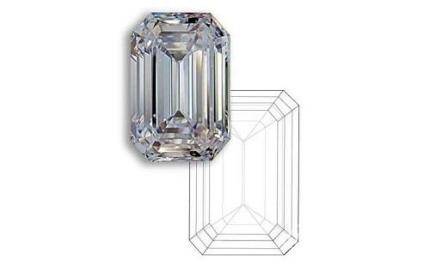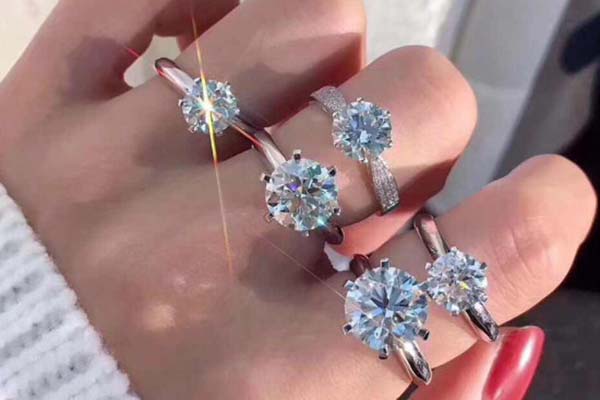The Mystique of Moissanite Diamond Cutting
Before selecting wholesale Moissanite diamond, it’s crucial to acquire some basic knowledge about these gems. Among the various factors that affect the quality of Moissanite diamonds, cutting plays a pivotal role. Each cutting technique transforms a rough Moissanite diamond into a polished gem, determining its brilliance, brightness, and fire. Let’s delve into the secrets behind Moissanite diamond cutting!
Round Brilliant Cut
The round brilliant cut, also known as the brilliant cut, is one of the most labor-intensive cutting methods and demands high-level precision. Round diamonds showcase the diamond’s fire to the fullest, efficiently reflecting incoming light. This cut has a rich history, with Marcel Tolkowsky perfecting it in 1919, typically featuring 58 facets (33 on the crown, 24 on the pavilion, and 1 on the culet).

Princess Cut
The princess cut diamonds are pyramid-shaped with four diagonal facets that effectively reflect incoming light. This is the brightest cut among square-shaped gems, first introduced in 1980. It creates the illusion of a larger size when measured diagonally, making it appear 15% bigger than a round diamond of the same weight. Additionally, princess-cut diamonds are more budget-friendly since their square shape closely resembles the octahedral shape of diamond rough, resulting in minimal wastage and higher yields.

Pear Cut
The pear cut, also known as the teardrop cut, is a fancy cut with a rich history dating back to the 15th century. These diamonds can vary in width and length, but the bottom should be symmetrical and the sides should gradually curve without any sharp edges. The teardrop shape features a pointed top and a rounded bottom, combining elements of both round and marquise cuts.

Heart Cut
The heart cut is one of the most challenging cuts, requiring skilled craftsmen to ensure perfect symmetry. Similar to the pear shape, it features a pointed top but gradually curves to a point on both sides.

Oval Cut
The oval cut, technically called the “oval modified brilliant,” is an improvement upon the traditional round brilliant cut. If you’re looking for a diamond with a larger carat weight, the oval shape is an excellent choice. Due to its elongated shape and larger surface area, it appears bigger than a round diamond of the same carat weight when viewed from the top. However, when buying oval diamonds, it’s essential to consider the length-to-width ratio, preferably ranging from 1.3 to 1.7.

Cushion Cut
The cushion cut emerged around 200 years ago and became the most popular choice for engagement ring diamonds in the early 20th century. With multiple refinements, it now combines the classic cushion appearance with modern brilliant fire. A recent variation of the cushion cut includes changes to the fire pattern, adding extra facets to create a dazzling “crushed ice” effect.

Emerald Cut
The emerald cut, named for its origins in emerald gem cutting to prevent fractures, has been adapted for diamonds. These diamonds have larger table facets, emphasizing the gem’s natural color and internal impurities. As such, this cut places high demands on diamond color and clarity.
Moissanite diamonds come in a variety of cutting styles, each with its own unique appeal. Understanding the characteristics of these cuts can help you make an informed choice when selecting a Moissanite diamond engagement ring that perfectly suits your preferences.

Conclusion
Moissanite diamonds are renowned for their beauty and brilliance, and the art of cutting plays a vital role in bringing out their full potential. By exploring the diverse world of Moissanite diamond cuts, you can make an informed choice when selecting the perfect wholesale Moissanite jewelry like from moissanitejewelrywholesale.com for your jewelry piece.
